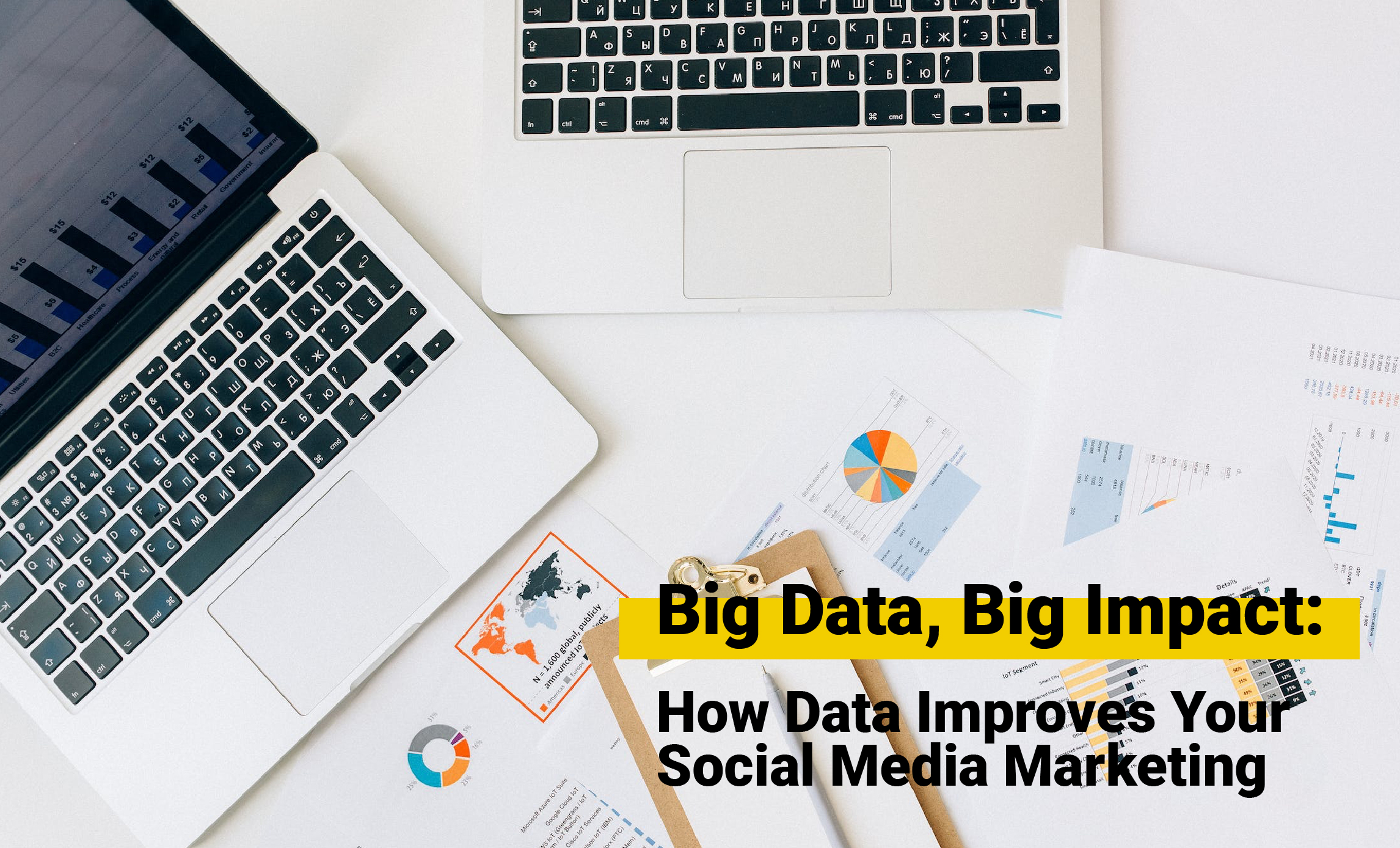Big data has significantly changed the way businesses market on social media.
For over a decade, brands have used social media to connect with their target audience. Now, thanks to cloud computing power and big data, they’re able to do so with much greater precision. Better still, increasingly powerful artificial intelligence (AI) tools can automatically create response-driven ad copy that brings down brands’ cost per lead or sale.
Below, we will examine big data’s impact on social media marketing and share a five-step approach to creating a winning strategy for your company.
How big data can improve your social media marketing
Big data is key for successfully managing social media marketing campaigns, offering the following three distinct advantages:
Finding your audience
When creating a social media marketing campaign, companies can use each platform’s advertising dashboard to precisely pinpoint their target audience. By doing this, marketers avoid exceeding their advertising budget by contacting those with no interest in buying from them.
How are social media companies able to identify target audiences so accurately? Big data analyzes each person’s social media usage: What posts are they liking and sharing? What pages are they following? This information creates a profile to tell marketers what products and services the user is most likely to be interested in.
Testing what works
Social media metrics allow marketers to look at past and current campaigns and analyze the return on investment (ROI) for each. For example, you can see how successful a particular post or ad is in engaging with your social media audience and analyze the ROI for each. Marketers use this information to fine-tune campaigns before launch and make any adjustments needed once the campaign goes live.
Planning ahead
Businesses can use big data for business planning purposes. With the collected data, consumer buying trends can be identified: What products and services will your client base likely seek out next? What types of new products should you introduce into your inventory? What types of products need to be removed or reevaluated?
Tip:
SMBs use big data analytics on social media marketing, as well as to find ways to reduce costs, increase products and inform general business decision-making.
How to create a social media strategy with big data
The most successful social media strategies match what your customers and the outside world are telling you. Consider taking the five following steps to create your company’s social media strategy:
1. Find out what the general public thinks of your brand.
To hear what the wider world is saying about your brand and its products and services, consider investing in a social customer relationship management (CRM) solution. Many CRM packages include or offer social listening tools as an add-on that you can use to track social media trends.
Set your CRM to watch out for mentions of your brand and its products and services. Track what people are saying about your competitors too. The unstructured data it gathers is then passed through AI so you can see which products consumers are excited about and share with their friends on social media. [Read related article: The Best CRM Software]
2. Get whole-market insights from both social media and customer data.
To start, the unstructured data you’ve got from your social CRM software should be related to the structured data already available, like the customer details, to derive actionable insights with big data. From there, you can create a social media strategy based on the insights obtained. Figure out the best possible strategy that encompasses the key factors to bring out consumer-driven results.
3. Create content based on your insights.
With the strategy in place, now is the time to create the content. Come up with material that will resonate with your customers. Since content is crucial in the success of your strategy, it is important to spend time drafting it.
4. Choose your target audience.
When the content is ready, it is time to pinpoint the customers. From the results of the analysis performed earlier, you can identify and reach your target market.
5. Run your campaign and analyze the results.
Lastly, it is time for execution. Armed with the right content from the analysis, you can check the effectiveness of the strategy.
When your social media strategy has been executed, analyze it, gain insights and use it to refine the process. That is the most important result to glean from the social media campaigns or strategies implemented.
Bottom Line
While big data can help you get better campaign results, don’t forget the 5:3:2 rule for social media. You need to create a mix of content to keep your followers engaged and interested. If you use most of your posts to sell, you’re likely to lose followers.
The importance of big data
Social media marketing is still worth it despite recent dips in engagement on platforms such as Facebook and Instagram. Big data has made marketing analytics more about future predictions and the effects of the current strategies in the future. Predictive analysis is gaining popularity with the marketers, and big data plays a huge role in it.
Not only can marketers predict the behavior of consumers, but they can also use the conclusions from their data analysis in various other indirect marketing methods, like split testing. The right analysis and adoption of big data will ensure that the strategy hits the target and boosts ROI significantly.
The following Mark Fairlie from 2023 provides their research perspective. HERE



